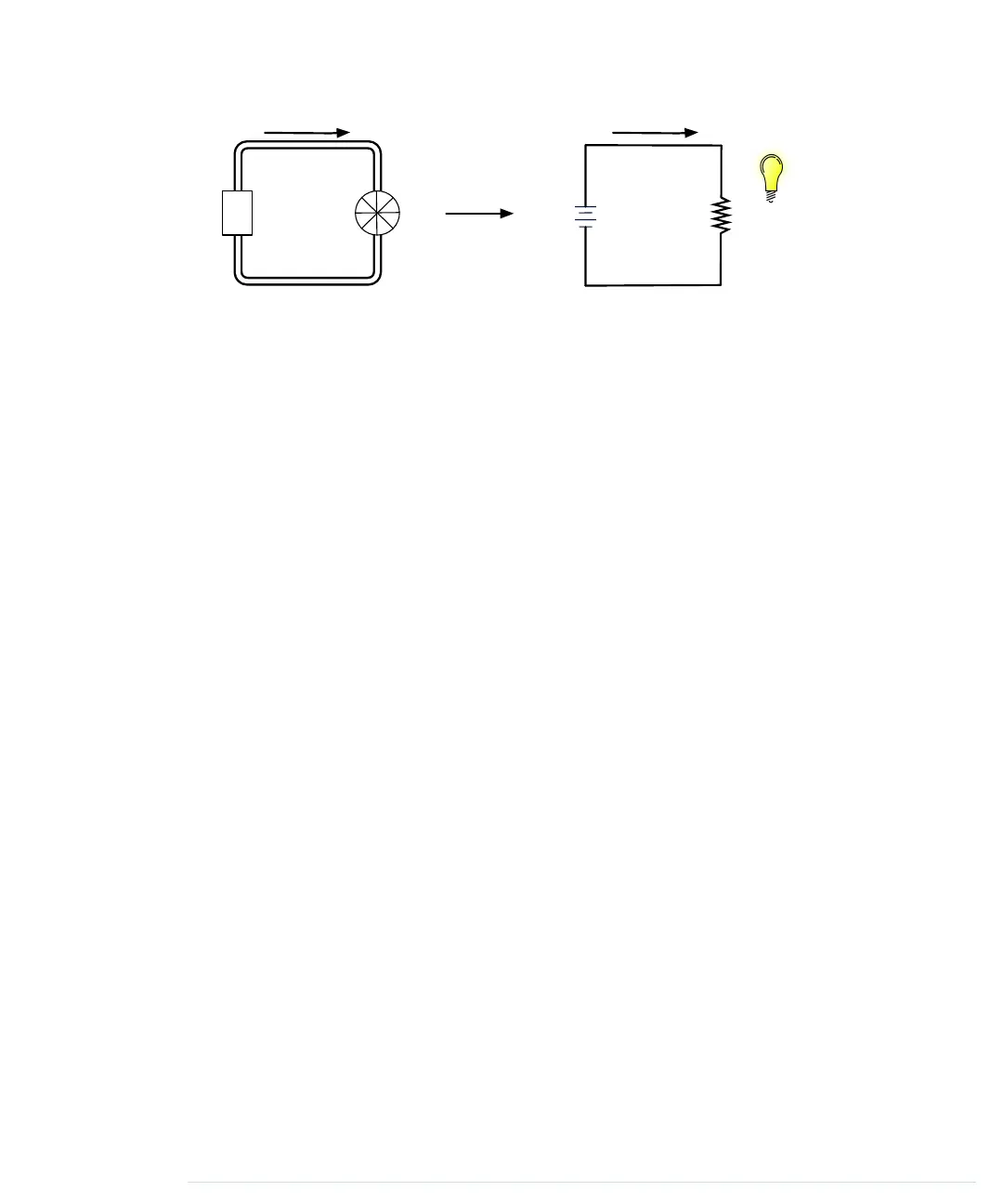Current
Pipe
Water
Pump
Water
Mill
+
-
Current (I)
Power
Supply
Voltage
(V)
Resistance (R)
Wire
Dynamo
While water flows in a water circuit, electrons flow in an electrical circuit.
Voltage is electricity’s equivalent of water pressure and is measured in volts
(V). Voltage is the initial cause for a current, and the higher the voltage, the
faster the current flows.
In electronics, current is the amount of electricity flowing through an electric
line. It is the equivalent of the actual flow of water in a water circuit. While
we measure the water flow in liters per minute, we measure current in
amperes. One ampere means that approximately 6.24 × 10
18
electrons are
flowing per second.
Every component in a circuit—be it water or electricity—resists some amount
of current. In a water circuit, it’s the pipes the water is flowing through or
perhaps a water mill. In an electrical circuit, it is the wire or a light bulb.
Resistance is an important physical phenomenon that is closely related to
current and voltage. We measure it in ohms, and its official symbol is Ω.
The German physicist Georg Ohm found that current depends on voltage and
resistance. He postulated the following form that we call Ohm’s law today (we
use I as the current’s letter for historical reasons. In the past, it stood for
inductance):
• I (current) = V (voltage) / R (resistance)
This is equivalent to the following:
• R (resistance) = V (voltage) / I (current)
• V (voltage) = R (resistance) × I (current)
So, for two given values, you can calculate the third one. Ohm’s law is the
only formula you’ll absolutely have to learn when learning electronics. When
working with LEDs, it helps you calculate the size of the resistor you need.
If you look at an LED’s data sheet, you will usually find two values: a forward
voltage and a current rating. The forward voltage usually is between 1.8V and
Appendix 1. Electronics and Soldering Basics • 240
report erratum • discuss
www.it-ebooks.info

